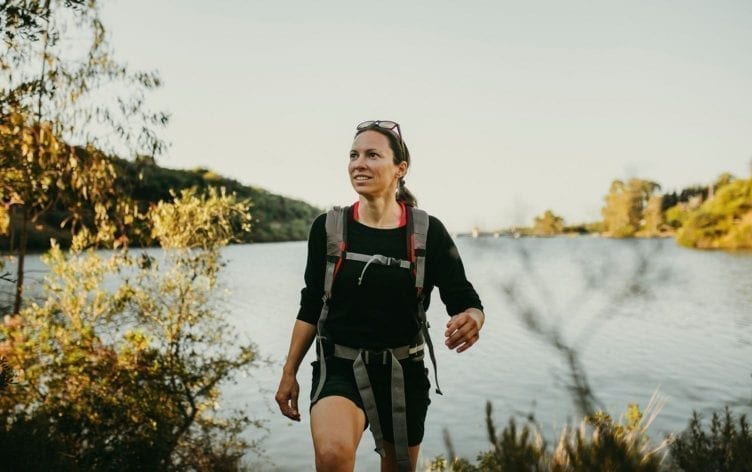It’s tempting to thinkwalkingis simply putting one foot in front of the other. In reality, the process of walking is a coordinated effort from the entire body, from the feet up to your head, including your arms, shoulders and torso — and it’s allcoordinated by neuronsfiring from our spines to our brains.
UPPER BODY BENEFITS
Walking might seem as natural as breathing and like there is little need for improvement, but many of us are missing out on the whole-body benefits, including those in the upper body, particularly in our arms. Biomechanist and movement expert Katy Bowman, who recently released the online courseWalking Wellsays the upper body’s stability and mobility are nearly as critical as your lower body.
“Whether you’re carrying groceries, pushing a stroller or wheelchair, or just walking for pleasure, your upper body needs to be just as strong and mobile as your lower body,” Bowman explains. In fact, other than walks for pleasure, almost all of our walking involves some work in our upper bodies. Evenwalking a dogrequires plenty of arm strength, core stability and shoulder mobility.
THE ROLE OF ARM SWING
Arm swing is a major part of our balance and control while walking, Bowman explains. That reciprocal swing — the way your left arm swings forward as your right foot steps forward — is critical tostaying balanced. The next time you’re walking, try keeping your arms down by your sides, and notice how much harder it is to feel well-balanced. Try it on different surfaces or trails for an even more dramatic difference!
Harvard Healthexperts recommend keeping your elbow bent at 90 degrees and your hands unclenched (picture gently holding an egg you don’t want to smash) while your arms swing in sync with your legs. You may find a slightly less intense arm angle is more comfortable for you, but let them bend — don’t keep them straight. As your arms swing, Bowman recommends focusing on swinging them back behind you, rather than in front of you. This helps improve your arm and shoulder mobility and works as a counterbalance to your forward step.
While arm swing rhythm matters, mechanics do as well. Having good mobility in your shoulder blades allows your arms to “glide effortlessly as you walk,” as Bowman explains. This may mean swapping your bag that you always carry on your left shoulder for a backpack or fanny pack during longer walks.
CORE MUSCLES
“核心”之间的联系我们的上半身和lower body while walking is critical for tying your whole walking posture together. A strong, supple core is critical for walking up and down hill. Jill Miller, Bowman’s partner in the Walking Well course and a fascial release expert, reminds us our arms aren’t just extensions of our body, they’re intimately connected. The shoulder girdle surrounds the front, back and top of your ribcage, which means the way your torso and ribs move when you walk impacts your arms, and vice versa.
Finally, arm swing can be an early warning sign of something more serious: If you notice your arm swing has suddenly become unbalanced, it could be an early sign of Parkinson’s disease. A 2011studynoted people with Parkinson’s swing one arm less than the other while walking, and noticing that change can help with early detection and interventions for the disease.
Check out“Workout Routines”in the MyFitnessPal app to discover and log workouts or build your own with exercises that fit your goals.

